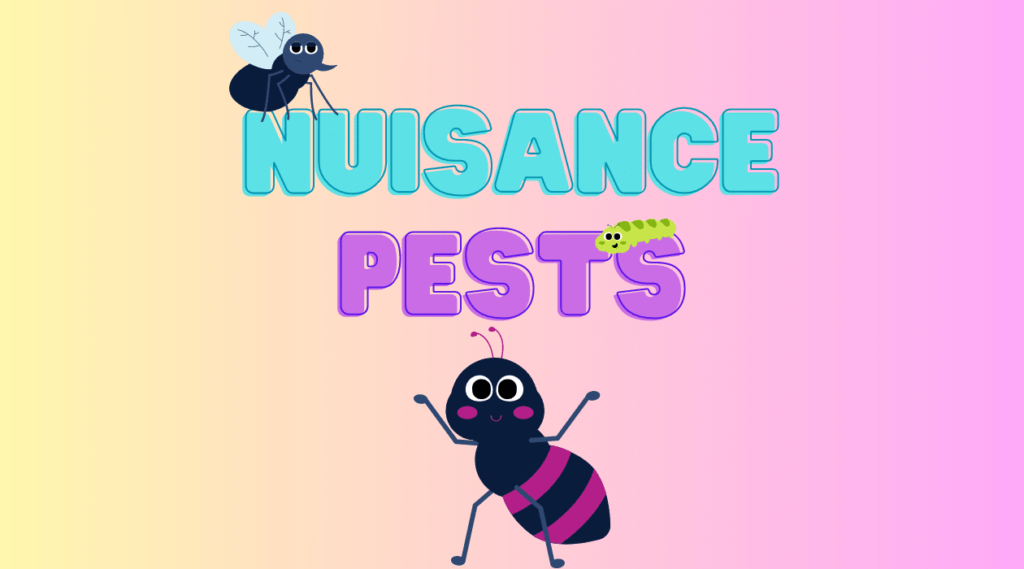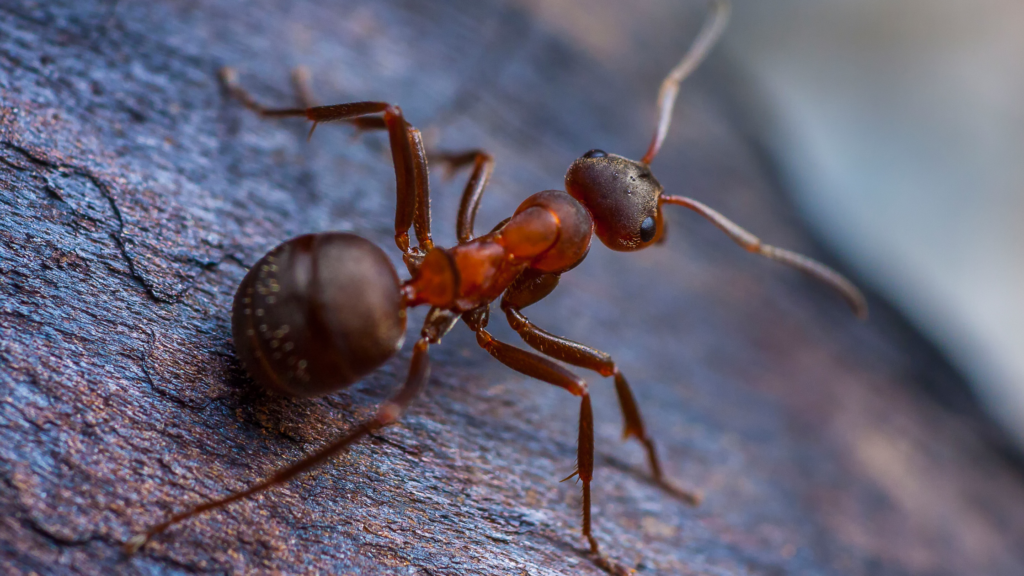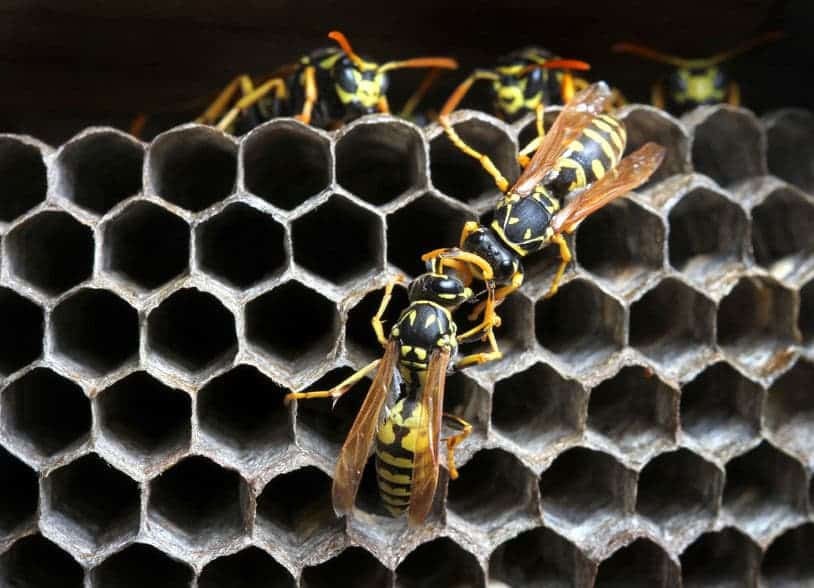
We know it’s not summer yet (technically that’s not until the 21st), but we’ve already had quite a few high temperature days. With summer nearly upon us, it’s a great time to look at some common nuisance pests in Florida this time of year.
Yellow Flies
Ever heard of yellow flies before? Well, if you’ve been bit by one, the answer is probably yes! Yellow flies are known for their painful bites, and they tend to peak during late spring and early summer. Female yellow flies are responsible for the bites as males mainly feed on pollen and nectar. Yellow fly bites usually cause itchiness, redness, and swelling.
These flies will hang out in shaded, humid areas near forests, rivers, and creeks. They tend to be most active in the early afternoon on cloudy days. When it comes to the lifecycle of yellow flies, they lay their eggs near water sources. Eggs usually hatch within five days and the larvae feed on decaying organic matter. Larvae go through 10 molts before becoming adult flies.
Yellow flies are a major nuisance and there are limited control methods, unfortunately. But one key to avoiding yellow fly bites is wearing insect repellent when you’re outside near their potential habitats. If you’re looking to implement a system to help control the population on your property, you can try a bit of an unconventional DIY approach for these pests. If you cover a black or other dark-colored, large ball (think, beach ball sized) in Tanglefoot – a sticky, pest-trapping substance – and hang it up in the affected area, the flies will investigate and be stuck. Now, this is not a complete solution, but if it’s a small area of impact, it could help with being overwhelmed by yellow flies.
Sugar Ants… But not really
Alright, folks. We know this may be a Palmetto-Bugs-Are-Just-Cockroaches level scandal, but we’ve got to let the people of Florida know the truth! We do not have sugar ants in Florida. In fact, the only known ant species called sugar ants resides in Australia – meaning that really, we don’t have sugar ants in the U.S. at all. Wild, we know.
If you’re wondering how an entire country started saying we have a pest that doesn’t exist here, fear not! We’ve got answers (we are your friendly, neighborhood pest controllers after all). The term “sugar ant” is generally used as a catch-all to refer to any ant that eats sweets. A more accurate term would be sweet-feeding ants.
So, if we *don’t* have sugar ants… what are those things we’ve all been calling sugar ants for as long as we’ve been calling cockroaches palmetto bugs? That depends. There are quite a few species of ants in Florida that feed on sugar and sweets. It’s important to properly identify the species of ant to treat for them effectively. Here are just a few examples of sweet-feeding ants:
- Acrobat Ants
- Argentine Ants
- Ghost Ants
- Little Black Ants
- Odorous House Ants
- Pavement Ants
- Pharaoh Ants
- Rover Ants
If you’re interested in learning more about the various species of ants we have in Florida, check out our Pest Control Library and other ant blogs!
Aquatic Midges
Formally known as Chironomidae, aquatic midges are a family of non-biting fly that peak from April through November. They are considered a nuisance pest, but unlike the earlier mentioned fly (the yellow fly), since they do not bite, there is no risk of disease transmission through taking blood meals from live hosts. Really, they’re more annoying than anything.
Aquatic midges are generally found in small natural lakes, wastewater channels, and sewage oxidation or settling ponds. These habitats are indicative of the conducive conditions this sort of pest looks for: deteriorating water quality and a system that is very high in nutrients and algae.
Unfortunately, and similarly to the yellow fly, chemical control is not an effective solution. However, you can try to reduce the nuisance by reducing light levels at night because aquatic midges are attracted to light. If you need to keep some form of outdoor lighting, try red lights. Red lights are the only color of lights that do not attract aquatic midges. You can also try placing a bug zapper in the area where they typically congregate and cause you the most annoyance, but keep in mind that this could potentially hurt other beneficial insects.
If you happen to own a pond that is allowing them to flourish, consider stocking the pond with catfish or other bottom feeding fish. You may also want to plant aquatic plants that help to remove excess nutrients that midge larvae feed on. Reducing fertilizer applications on your property can assist with limiting additional nutrients being added to ponds or other bodies of water inadvertently.
Mosquitoes
And last but certainly not least, we have our Florida state bird… the mighty mosquito. Jokes aside, mosquitoes run rampant in Florida, which provides the optimal climate for them. Sometimes mosquitoes and aquatic midges are mixed up, but there is the obvious, key difference: mosquitoes will come at you for a blood meal and aquatic midges will not.
We know we’ve already shared lots of information about mosquitoes in the past, but a little refresher never hurts! While most folks are already well aware of mosquitoes’ affinity for blood meals, what you might not know is that mosquitoes don’t exclusively consume blood. Mosquito larvae will also eat bacteria, algae, tiny crustaceans, and other little organisms in the water they develop in. Adult mosquitoes, in addition to blood meals, will eat nectar from flowers and plants, which is a great energy source for them.
Mosquitoes hang out in dark, damp, mostly undisturbed places such as the shaded undersides of leaves, or more generally under shrubs and plants. The good news is that there are quite a few natural predators to mosquitoes including but not limited to frogs, birds, bats, and dragonflies.
In addition to monthly mosquito misting service, some preventative measures you can take to reduce the mosquito population in your yard include addressing water collection areas. For example, frequently refreshing the water in any bird bath you may have or installing a small fountain in it to keep the water moving. You will want to make sure that you dump standing water out as soon as possible after it collects, like after one of our famous Florida toad stranglers.
Mosquitoes are a pain (sometimes literally depending on the reaction to their bite) and we know it’s difficult to address them on your own. Luckily, the pest professionals at Turner are here and ready to help! You can check out more information about our mosquito service here or give us a call at (800)225-5305.



